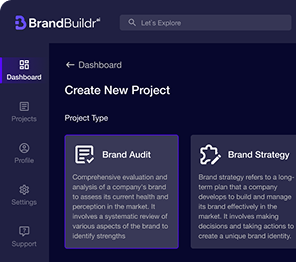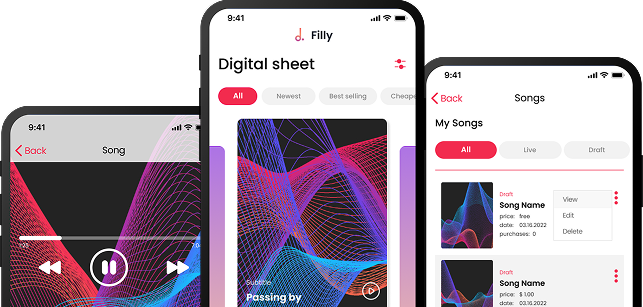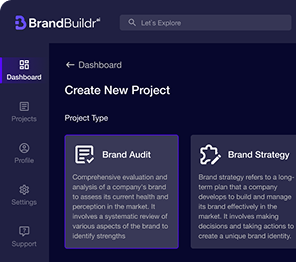Planning a web application development project requires careful consideration of numerous financial factors that can significantly impact your overall investment. The global web applications market is projected to reach $10.149 billion by 2027, demonstrating the increasing demand for digital solutions across industries. Understanding the comprehensive cost structure of web application development enables businesses to make informed decisions, allocate resources effectively, and achieve maximum return on their technology investments.
Web application development costs vary dramatically based on project complexity, scope, and implementation requirements, ranging from as low as $3,000 for simple applications to over $100,000 for complex enterprise solutions. The challenge lies not just in understanding these base costs but also in accounting for the numerous variables that influence the final price tag.
The modern business environment demands sophisticated web applications that can handle complex workflows, integrate with multiple systems, and provide seamless user experiences across various devices and platforms. This complexity translates directly into development costs, making it essential for business leaders to understand the relationship between application requirements and financial investment. Strategic budgeting involves not only calculating initial development costs but also considering long-term expenses, including maintenance, updates, hosting, and scaling requirements that will impact the total cost of ownership over the application's lifecycle.

Key Factors That Impact the Cost of Web Application Development
The cost of web application development is influenced by multiple interconnected factors that must be carefully evaluated during the planning phase.
%20(1).png)
Key cost drivers include:
- Project scope: Determines resource requirements, timeline, and complexity.
- Application complexity: More features, integrations, sophisticated UI, and backend requirements increase costs.
- Development team structure: In-house U.S. teams can cost ~$250,000/year per developer, while outsourcing to regions like Eastern Europe reduces costs to $50–100 per hour.
These geographic cost differences can result in total project savings of 50–70% without compromising on technical expertise or delivery quality.
How Project Scope and Complexity Affect Development Costs
Project scope directly correlates with development costs through its impact on required resources, timeline, and technical complexity.
Typical budget ranges:
- Simple apps with basic functionality: $10,000–$60,000
- Medium complexity apps (custom UI, auth systems, DB integration): $60,000–$150,000
- Complex enterprise apps with advanced features: $200,000+
Complexity can also vary by architecture:
- Single-page apps (SPAs): Dynamic content, real-time interaction, more sophisticated frontend.
- Multi-page apps (MPAs): Better SEO and content management, potentially more server resources.
- Progressive Web Apps (PWAs): Combine SPA and MPA benefits but require specialized expertise.
Advanced functionality like AI, blockchain, or AR can dramatically increase costs due to specialized expertise required (AI at $100+ per hour, blockchain specialists also at premium rates).
Choosing the Right Tech Stack: Cost Implications
Technology stack selection significantly influences both development costs and long-term maintenance expenses.
- Open-source technologies (Python, React, Node.js): Lower licensing costs, but may require specialized expertise.
- Proprietary technologies: Licensing fees, vendor support costs, but integrated environments.
Advanced stacks (AI, blockchain, cloud-native) require more skilled developers commanding $100–150/hour.
Long-term cost considerations:
- Maintenance and scalability requirements
- Upgrade needs
- Community support reducing troubleshooting time
However, cutting-edge technologies might require more frequent updates and specialized maintenance.
Understanding the Cost Breakdown for Web Application Development
A comprehensive cost breakdown reveals multiple components contributing to total project investment.
.png)
- Development hours: Typically 50-60% of total budget.
- Clutch survey: Average project cost $66,499, typical timeline 9 months (~$7,139/month).
- Essential development costs: $0 (no-code) to $150,000+ (custom).
- Design/UI/UX: $500–$30,000 depending on complexity.
- Hosting/infrastructure: $5–$500 per month.
- Third-party integrations: $0–$5,000+.
Web app pricing tiers:
- Simple: $5,000–$15,000
- Medium: $15,000–$60,000
- Complex: $60,000–$250,000+

Hourly vs. Project-Based Pricing for Web App Development
Hourly rates vary widely. Freelancers can charge $15–50/hour, while specialized North American and European developers often ask $50–150/hour. Enterprise-class firms may exceed $400/hour, and offshore teams typically charge $27–82/hour.
Project-based pricing offers cost certainty, best for well-defined requirements. Time-and-materials pricing offers flexibility for evolving needs but needs tight management to avoid overruns.
Costs Associated with Design, Development, and Testing
UI/UX design can range from $2,500 to $80,000+. Simple layouts might cost $12,960–$25,000, while complex designs with animations can exceed $82,000.
Development costs cover frontend, backend, database, API development, and integrations. Backend development often commands higher rates. Full-stack developers can earn $2,400/month (Ukraine) to $6,250/month (U.S.). Specialized tech like AI or blockchain typically costs $100+ per hour.
Testing usually represents 10–20% of development costs and includes functional, performance, security, and cross-platform testing. Automated frameworks can save in the long term but need upfront investment.
Estimating the Budget for Your Web Application Development Project
Accurate budgeting starts with clear requirements and feature prioritization. Break down the project into components — development hours, team composition, technology, design, integrations, and include overhead, QA, and deployment.
Methodologies like parametric, analogous, and bottom-up estimating help reduce risk. Regular reviews ensure budgets stay accurate as the project evolves.
Budgeting for a Simple Web Application
Simple apps typically cost $4,250–$15,000 and take 1–3 months to build. They focus on essential features with minimal customization.
Cost-saving strategies include open-source tools, existing design frameworks, and the MVP approach, which can cut costs by 50–70% while validating market demand early.
Estimating Costs for Advanced Web Applications
Advanced apps with custom integrations and sophisticated UIs typically cost $60,000–$250,000+ with timelines from 6 months to over a year. Budgets must account for complex design, robust backend work, security, dedicated project management, specialized testing, and performance optimization.
Risk management is critical, with recommended contingency allowances of 15–25%.

The Role of Web Application Design in Development Costs
Design impacts development costs through complexity and its effect on user satisfaction. Good design can improve engagement by up to 35%.
- Basic designs with templates might cost $500+.
- Custom designs with animations can exceed $20,000.
Factors influencing costs include number of unique pages, custom graphics, animations, responsive design complexity, and brand integration.
How UI/UX Design Affects Your Web App Budget
Design costs vary with project complexity, team location, and scope. Simple apps may require $12,960–$25,000, while complex apps can exceed $80,000.
Geographic location matters. San Francisco rates are ~$30/hour higher than average. European/North American designers charge $50–150/hour, while Asian/Eastern European designers might charge $20–70/hour.
Balancing Quality and Budget for Web App Design
Achieving balance means prioritizing core UX elements, planning for phased enhancements, and leveraging existing design systems or templates for 50–70% savings.
Long-term value matters: better design reduces revisions, increases user satisfaction, and improves market performance.
Hidden Costs in Web Application Development You Need to Consider
Web application projects often encounter unexpected expenses that can significantly impact overall budgets if not properly planned. Hidden costs are a major reason why 45% of software projects exceed their initial budgets.
Project management costs are often overlooked but typically represent 10–15% of total development budgets. Effective management requires dedicated resources for coordination, communication, progress tracking, and quality assurance. Complex projects may also need specialized tools, regular stakeholder meetings, and detailed reporting processes that add cost but are essential for successful delivery.
Infrastructure and hosting requirements vary significantly depending on application complexity, user load expectations, and performance needs.
- Basic hosting: $5–25/month
- Enterprise-grade hosting: $100–10,000+/month (dedicated servers, CDNs, advanced security)
These ongoing operational costs must be factored into long-term budgets.
Maintenance and support after launch are also critical. Post-launch maintenance typically equals 10–20% of annual development costs but is essential for security, performance, and user satisfaction. Activities include:
- Security updates
- Bug fixes
- Performance optimization
- Feature enhancements
- Compatibility updates for new browsers and OS versions
The complexity of maintenance depends on app architecture, technology stack, and user base size.
- Simple apps: $50–500/month
- Complex enterprise apps: $1,000–10,000+/month
Maintenance costs usually increase over time as applications grow and user bases expand.
Proactive maintenance strategies, like regular code reviews, automated testing, performance monitoring, and security audits, help control long-term costs by preventing major issues. Establishing maintenance contracts during initial planning provides cost predictability and ensures ongoing support.
Hosting and Infrastructure Costs for Web Applications
Hosting and infrastructure costs vary widely based on requirements, traffic expectations, and performance needs.
- Basic shared hosting: $2–25/month
- Dedicated servers or cloud infrastructure: $100–10,000+/month
Cloud-based solutions offer scalability but can result in variable costs depending on usage patterns. CDNs improve performance but add costs ranging from $0.0475–$0.213/GB. Email hosting, SSL certificates, domain registration, and backups add further ongoing expenses.
Hidden hosting costs can come from bandwidth overages, storage expansion, security enhancements, and compliance requirements. Many hosting providers advertise low introductory rates but charge extra for essentials like SSL certificates, backups, and migrations. Businesses should evaluate total hosting costs carefully to avoid unexpected fees that can double or triple initial estimates.
How to Save on Web Application Development Without Compromising Quality
Cost optimization strategies help reduce expenses while maintaining quality. Effective cost management involves smart planning and decision-making across all project phases.
The MVP (Minimum Viable Product) approach is one of the most effective strategies:
- Focuses on essential functionality
- Reduces initial development costs by 50–70%
- Validates market demand early
MVP development lets businesses launch quickly and gather real user feedback before investing in advanced features.
Leveraging open-source technologies, existing frameworks, and pre-built components can also reduce development time and costs without sacrificing quality. These solutions provide reliable foundations while allowing customization. However, organizations should evaluate licensing requirements, long-term support, and integration complexity to ensure alignment with goals.
The Value of an MVP Approach in Web App Development
The MVP approach minimizes financial risk by testing market demand and validating assumptions before large investments. This strategy helps avoid the common startup failure of building products without proven demand by collecting real user feedback early.
Cost benefits extend beyond initial savings. By using real usage data, businesses can:
- Prioritize future features
- Avoid investing in unneeded functionality
- Reduce the likelihood of costly redesigns
MVP development enables iterative improvement based on actual user behavior, resulting in better products with fewer post-launch changes.
Outsourcing vs. In-House Development: Which Is More Cost-Effective?
The choice between outsourcing and in-house development greatly impacts costs.
- In-house teams: ~$1,050/hour for a complete team
- Outsourced European teams: ~$300/hour (potential 70% savings)
Outsourcing eliminates hidden costs like recruitment, benefits, office space, equipment, and training. Recruiting a single developer costs $4,000–7,000, and new hires often need 3–6 months to reach full productivity. Outsourcing offers immediate access to skilled teams without these upfront costs.
Geographic arbitrage enables high-quality services at competitive rates. Skilled developers in Eastern Europe, Asia, and Latin America may offer rates 50–80% lower than North American resources. However, successful outsourcing requires careful vendor selection, clear communication, and strong project management to maintain quality and timelines.
Final Thoughts
Strategic budgeting for web application development requires comprehensive understanding of cost factors, careful planning, and realistic expectations about both immediate and long-term expenses. Successful projects balance functionality requirements with budget constraints while accounting for hidden costs that can emerge throughout the development lifecycle. The investment in proper planning and cost estimation pays dividends through reduced risk of budget overruns and more successful project outcomes.
Effective cost management extends beyond initial development to encompass ongoing operational expenses, maintenance requirements, and future enhancement needs. Organizations should develop comprehensive budgets that account for the total cost of ownership over the application's expected lifecycle. This holistic approach to budgeting ensures sustainable application operation and provides the foundation for long-term business success through strategic technology investments.
Work with Codebridge to bring clarity and control to your web application budgeting.
We combine technical expertise with strategic planning to help you navigate every phase of your development journey — from cost estimation and MVP design to full-scale implementation and long-term support. We deliver scalable, cost-effective web solutions that align with your business goals and budget realities.The most successful web application projects combine careful cost planning with strategic vision, focusing on delivering value to users while managing financial resources effectively. By understanding the factors that influence development costs and implementing proven cost optimization strategies, businesses can achieve their digital transformation objectives while maintaining fiscal responsibility. Strategic budgeting for web application development represents a critical business capability that enables organizations to leverage technology effectively in competitive markets while maximizing return on their development investments.
Heading 1
Heading 2
Heading 3
Heading 4
Heading 5
Heading 6
Lorem ipsum dolor sit amet, consectetur adipiscing elit, sed do eiusmod tempor incididunt ut labore et dolore magna aliqua. Ut enim ad minim veniam, quis nostrud exercitation ullamco laboris nisi ut aliquip ex ea commodo consequat. Duis aute irure dolor in reprehenderit in voluptate velit esse cillum dolore eu fugiat nulla pariatur.
Block quote
Ordered list
- Item 1
- Item 2
- Item 3
Unordered list
- Item A
- Item B
- Item C
Bold text
Emphasis
Superscript
Subscript




















.avif)

.avif)




.png)
